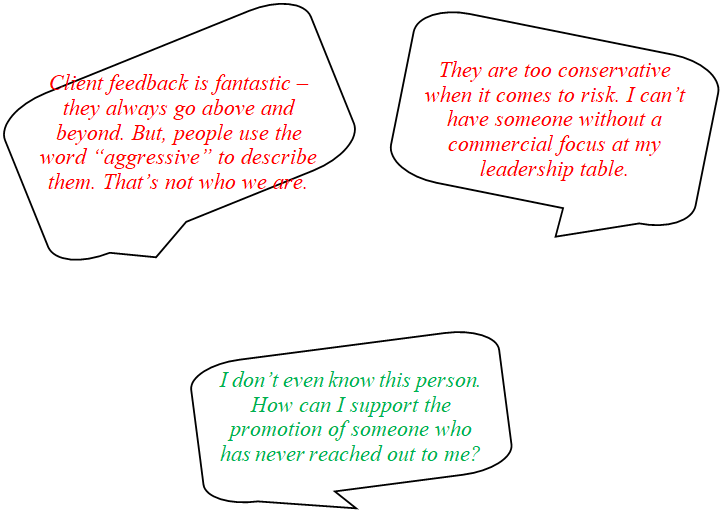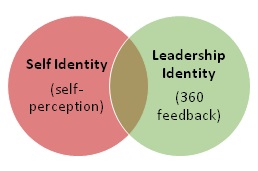A Coaching Model Created by Diane Long
(Leadership Coach, JAPAN)
Introduction
 The first promotion most people receive is in recognition of strong day-to-day work performance. They complete their responsibilities efficiently and accurately. In the early years of one’s career, the focus is on deepening technical expertise either through on-the-job training, internal training, or possibly an advanced academic degree.
The first promotion most people receive is in recognition of strong day-to-day work performance. They complete their responsibilities efficiently and accurately. In the early years of one’s career, the focus is on deepening technical expertise either through on-the-job training, internal training, or possibly an advanced academic degree.
As one moves up the career ladder, work performance is no longer the most important factor. Image and exposure are critical. It might surprise you to learn that only 10% of job performance contributes to career success. Image is 30% and exposure is 60% of what matters in getting promoted. This is the theory of Harvey Coleman’s PIE model and the reason why many leaders receive the surprising disappointment that they were passed up for a promotion or received a lower performance bonus than expected, not because of their work performance, but because of what other people thought of them (image) or who did/did not know them (exposure):

Think of it this way,
If a tree falls in a forest and no one is around to hear it, does it make a sound?
This metaphor highlights the strength of observation and perception. You believe you contribute 200% to every project. You believe you deliver to your clients above and beyond. BUT, there is noise about whether you fit the culture of the firm. You have been keeping your head down and some critical members of the senior leadership have no clue who you are. The key point: Your 200% work performance is only worth 10% of how you are evaluated. Work performance is the prerequisite of keeping your job, now you need to work on the other 90%: build your image and exposure, also known as, your reputation, your brand.
What sound are you making? Is it too loud? Too soft? Seems fake? Aggressive? Humble? Does it have the tone you intended? Is it your authentic self?
You just joined a new company. You received a promotion. You want a promotion. You need clarity on what direction your career should take. You are unsure what type of company culture is the best fit for you. In every one of these scenarios, you need to understand your leadership identity.
Coaching Model: Leadership Identity
Leadership Identity is your brand and reputation within your organization/industry. Our coaching relationship will be an exploration of the perspectives which contribute to one’s leadership identity. The objective is empowerment. By growing self-awareness into how we view ourselves and how others view us, we can act with greater intention. This is not about being inauthentic. It is about knowing who the authentic self is, what our goals are, and ensuring our behaviors reflect this authentic self.
Step 1: Identify – What are the core leadership competencies for success?
I will partner with you in deep due diligence of the core leadership competencies. For example, I have had clients who have a strong operational focus and then learn that a future promotion would require innovative, strategic thinking. Some organizations prioritize execution (“getting things done”) whereas others may prioritize relationship management (“how you get things done”). We will prioritize those which are key for your success, distinguishing between the must-have and the nice to have.
I take a data-driven lens in setting the foundation for which we will explore leadership identity. There are several reference points we will use to understand your leadership identity:
- Formal leadership competencies defined by your organization (if they exist)
- Expectations as identified by yourself and your stakeholders
- External research
Step 2: Self-Identity – What Do You See When You Look in the Mirror?
An honest “look in the mirror” requires vulnerability and a desire to grow. As your coach, I will create a safe space for you to undergo this exploration. We will have a balanced discussion which focuses on both strengths and development areas. Through powerful questioning and other brainstorming tools, I will guide you in creating an accurate picture of your self-identity. Over the years, I have challenged many leaders to look in the mirror to take the time and reflect on who they are. Through self-awareness, you will formulate a self-identity.
Step 3: 360 Feedback – What do other people see?
When we look into the mirror, we see one perspective of our leadership identity: our own. Instead of seeing ourselves in the mirror, let’s imagine others. Receiving feedback requires vulnerability, a growth mindset, and an openness to constructive criticism. Rarely do many of us have the opportunity to receive robust, honest feedback from our stakeholders. I may speak with some of the key stakeholders, conduct a written, anonymous survey, or leverage a feedback tool from your corporation. We will agree together on the best method to receive the 360 feedback. Through 360 feedback, this is an opportunity to understand the other perspectives from our stakeholders (e.g. clients, peers, direct reports, senior management, etc.)
We will summarize this feedback to form your current leadership identity. Remember, 90% of our performance is based upon image and exposure. My role as your coach is to facilitate a deepened understanding of your reputation and brand. I promise to provide honest, candid, and growth-oriented observations. Again, it is a safe, confidential space between myself and my client.
Step 4: Perception Analysis – How aligned is the self-perception to others?
Most corporations have a clearly defined set of formal leadership competencies. But, the individuals working in the firm will also have informal, unspoken leadership competencies. Most of the time, the informal is even more important than the formal. While feedback is subjective and opinion-based, we will treat the feedback as data to form your leadership identity. Your self-awareness is also subjective and opinion-based, but we also treat it as data to form your self-identity.
The stakeholder feedback you have received is what formulates one’s leadership identity. As your coach, I will challenge you to challenge yourself. If the gap is wide between self-perception and stakeholder perception, we will explore what needs to be resolved for you to reach your goals.

Step 5: Leadership Identity – What do you want your leadership identity to be?
No one is perfect and no one needs to be perfect. Based on the perception analysis, we will define your key priorities going forwards and how your leadership identity is supporting or limiting your success.
Through an honest look in the mirror, we will close the gap of differences between self-perception and external perception. You will identify actions so that your self-identity is the same as your leadership identity.
Step five is a forward-focused, action-oriented stage where we shift the focus from your current leadership identity to your ideal leadership identity. How do you want to be perceived? What does your image and exposure look like? What do you need to do to transform the feedback to this new, ideal leadership identity? As your coach, I will push for self-accountability in setting actions and following through with them. I will check in on the support you need from me and others so you are not alone. Our objective is the leadership transformation you desire.
Conclusion
Understanding one’s leadership identity is at the core of transforming your potential. When one is brave and honest with oneself, open to receiving feedback, and becoming more intentional with their behavior, it will empower you to be the successful leader you want to be.
References
- The best candidate doesn’t always get that promotion
- Building a leadership identity starts with a personal brand
- What do you see when you look in the mirror?
- Decoding leadership what really matters